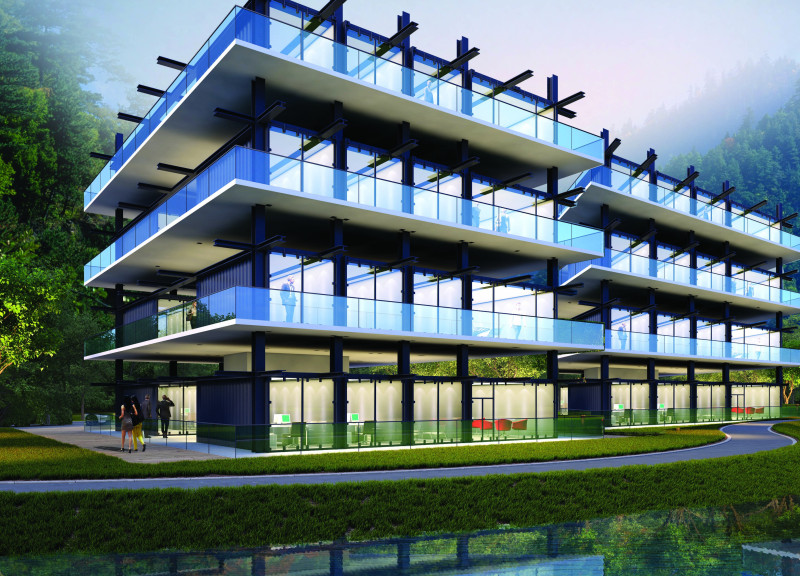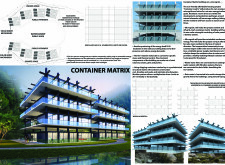5 key facts about this project
The primary function of the Container Matrix is to provide adaptable and resilient housing solutions while promoting environmentally responsible living. The modular units can be tailored to accommodate different demographics and site conditions, allowing for flexibility in both design and layout. Each unit is designed with energy efficiency in mind, utilizing passive solar strategies and high-performance insulation to minimize energy consumption.
Innovative Use of Modular Design Principles
What sets the Container Matrix apart from similar projects is its unique approach to modular design. The architecture employs shipping containers as the primary structural element, which allows for rapid assembly and reduced material waste. This construction method not only promotes sustainability but also offers a degree of adaptability that standard building methods do not provide.
The project integrates advanced technologies such as microgrids and rainwater harvesting systems, enhancing its self-sufficiency. These features facilitate energy generation and efficient resource management, reinforcing the objective of achieving net-zero energy consumption. The layout includes well-defined pathways, fostering community interaction while maintaining individual privacy within the residential units.
Sustainable Material Choices and Energy Efficiency
The material selection focuses on durability and sustainability. In addition to shipping containers, the design incorporates glass facades to maximize daylight and steel elements for structural integrity. The use of fire-resistant metal skins enhances safety, while R-50 insulation contributes significantly to thermal performance.
The inclusion of a decentralized septic system and efficient water management solutions further underscores the project's commitment to environmental stewardship. This thorough consideration of materiality and energy efficiency positions the Container Matrix as a viable model for contemporary housing, capable of adapting to changing societal needs and environmental challenges.
For those interested in learning more about the Container Matrix project, exploring the architectural plans, sections, and overall designs will provide deeper insights into this innovative approach. The architectural considerations and unique design strategies reflect a thoughtful response to the demands of modern living.























